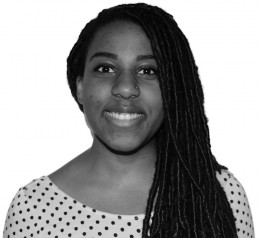
As an avid fan of house music and member of Binghamton University’s Hoop Troop, I’m almost the typical attendant of EDM festivals. However, my experience at this past summer’s Electric Forest Festival proved to me that so many white people just don’t get it. Because I am a person of color, what should have been an exhilarating adventure turned out to be a nightmare. I faced covert racism and microaggressions from pseudo-hippies that left me cynical about festival culture and colorblindness among the younger generation.
Festivals such as Coachella have already received backlash for the cultural appropriation of Native American headdresses; so much so that a plethora of festivals have banned the sporting of the war bonnets. Yet something that the media doesn’t address is the cultural appropriation of dreadlocks that is so apparent in EDM festival culture. The amount of white people with dreads at Electric Forest was astounding. I was prepared to be one of the few people of color at the festival, but I wasn’t prepared to see people steal my culture.
Many festival attendees fail to realize the cultural significance of hair as a part of black identity, especially dreadlocks. Historically, straightening black hair was a form of survival, in hopes of gaining access to opportunities and resources that African-Americans were denied. Wearing afro-textured in its natural state is a declaration against the European standard of beauty.
Now, there is nothing wrong with black people who straighten their hair, but there is everything wrong with white people having dreadlocks. The difference is that one group is assimilating into dominant culture, whereas the other is borrowing an important aspect of identity from a marginalized group. There is a lot of pressure in the workplace for black people to cut their dreads; there is the case of Ashley Davis, a Missouri woman whose company implemented a policy banning dreadlocks and other hairstyles. There is also the case of 7-year-old Tiana Parker, an Oklahoma girl who had to switch schools after she was sent home for her locs, a hairstyle deemed not “presentable” by school officials. So it is mocking and obnoxious for white people to wear them. I rock faux-locs myself as a protective style for my natural hair, so I was very offended by every white person I saw wearing dreads.
Another issue I have with these festivals is the visible drug culture within them. I am by no means judging anyone for their choices, but the role of drugs in the majority-white festivals is vastly different than it is in the black community. As I witnessed the open sale and use of narcotics on the festival campgrounds, I couldn’t help but think about the black and brown people from low-income neighborhoods that are disproportionately thrown in jail for drugs.
The war on drugs started during Richard Nixon’s presidency in the 1970s, and became an excuse to over-police and incarcerate men and women in poor, minority neighborhoods. According to the NAACP, five times as many whites as African-Americans use drugs, yet African-Americans are imprisoned for drug offenses at 10 times the rate of whites. Former U.S. Marshal and Drug Enforcement Administration Agent Matthew Fogg has recently spoken out about his administrators advising him to not enforce drug laws in white areas. Law enforcement’s application of drug policies is racially organized and takes for granted the lives of people of color. While white kids are partying worry-free on festival grounds, black people are unjustly vilified for drugs.
Overall, my time at the Electric Forest was a bust. The scenery was magical and I got to see Lauryn Hill perform, but this was not a safe space for me to express my love of music as a black woman.
– Chelsea Desruisseaux is a junior majoring in human development


